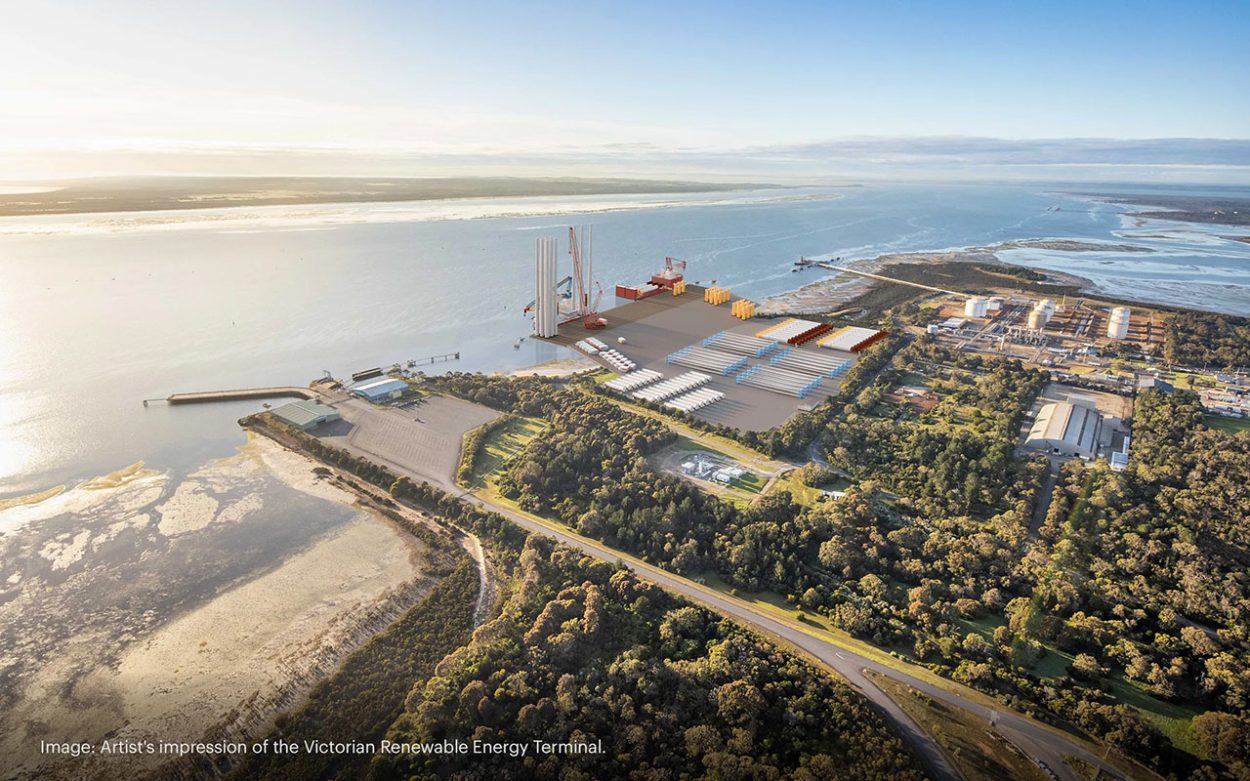MORNINGTON Peninsula Shire councillors have backed a formal submission on the environmental assessment for the proposed Port of Hastings renewable energy terminal, urging stronger safeguards for Western Port.
The Victorian Renewable Energy Terminal (VRET), proposed by the Port of Hastings Corporation, a state government-owned entity, would act as a dedicated assembly port in Western Port to support the construction of Victoria’s first offshore wind farms along the Victorian coast.
The project proposes a landside development and new land reclamation of about 16.5 hectares in area.
A draft Environment Effects Statement (EES) on scoping requirements was released for community comment late last year but following the federal government’s July decision that the project was a “controlled action” because of possible impacts on Western Port’s internationally protected Ramsar wetlands and wildlife, the requirements were updated and re-released for comment in September.
This will now see the proposed project progressed to a combined state and federal EES assessment process and potential approval.
At their 5 November meeting, councillors unanimously voted to endorse the shire’s submission in response to the updated EES following a three-week deadline.
A shire report noted, “While the project may play an important role in enabling Victoria’s renewable energy transition, it may also have significant and lasting environmental impacts on Western Port Bay and surrounds”.
In a summary of the shire’s submission, it highlighted “several key concerns and recommendations regarding the project description, potential environmental impacts and assessment requirements”.
“Notably, many of these were raised in council’s previous submission to the original draft scoping requirements in November 2024 and remain unaddressed,” it said,
Furthermore, it stated the project description “should demonstrate how matters of national environmental significance” under the Environment Protection and Biodiversity Conservation Act including Ramsar wetlands and threatened/migratory species, and how this “will be integrated into the assessment, approvals, mitigation, and management framework”.
It also stated that the EES “must clearly describe” all temporary facilities, such as construction compounds and temporary parking.
Save Westernport and environmental organisations, Victoria National Parks Association, Environment Victoria, the WP Biosphere and Phillip Island Conservation Society have written a joint letter in relation to the updated ESS, outlining their concerns to the state government.
This included the need to align the Marine and Coastal Act 2018 “and its ecosystem-based management principles, which provide a strong framework for marine environmental assessments” which “were largely overlooked in earlier drafts”.
“Unless amended, the final version of the scoping requirements risks undermining, Western Port’s environmental integrity, the credibility of Victoria’s assessment process, and community perceptions of offshore wind development,” the letter stated.
It also called on the state government to commit to implementing a marine spatial plan for Western Port to “guide the development of sustainable industries while protecting globally significant ecosystems and fulfilling commitments under the Marine and Coastal Strategy 2023-2027”.
The joint letter also wants to ensure the scoping requirements align with Victorian Government policy, particularly the principles set out in the Marine and Coastal Act 2018, as well as include full justification for the siting and design of the proposed VRET.
Cr Kate Roper emphasised the importance of a rigorous environmental assessment ahead of a potential large-scale project in the region.
“This is a major project, and we need to ensure that our environment can cope with such a development,” she said.
“We have delicate seagrass and mangroves that have been declining, and we have migratory birds that depend on the health of Western Port to thrive. Western Port is a very popular recreational fishing and boating area and this ESS can’t be rushed.”
Cr Michael Stephens was also supportive of the submission, highlighting several concerns regarding the project “still not addressed from the earlier council submission”.
Key matters for investigation in the VRET project’s draft scoping requirements include biodiversity and habitat, cultural heritage, marine and catchment values, amenity impacts, roads/transport and land management issues, land use and socioeconomic impacts, and a cumulative environmental effect.
The Committee for Frankston and Mornington Peninsula CEO Joshua Sinclair said they would be making a submission during the exhibition of the ESS supporting the new referral of the proposed terminal, but noted appropriate environmental approvals was critical.
“Western Port Bay includes within it an industrial port located in environmentally significant Ramsar wetlands and a unique biosphere. This makes getting the right balance and positive outcomes on projects like this so crucial,” he said.
“Should VRET receive the appropriate environmental approvals, we want education and industry leaders from our region to make the most of it. The Mornington Peninsula will have a unique opportunity to provide the skills, workers and expertise to develop this industry and cement Western Port as the renewable energy hub of Victoria.
“The proposed terminal is a significant project for our region, so taking key players from offshore wind and local industry to see the site in person was an incredibly valuable experience.”
The VRET project needs approval from both state and federal governments before construction can begin.
First published in the Mornington News – 18 November 2025



